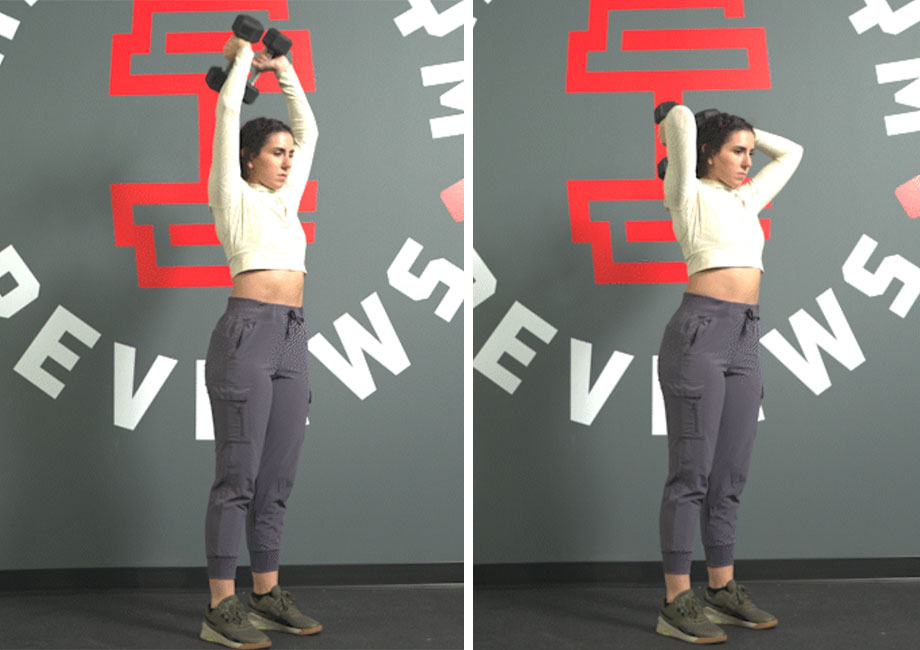We test and review fitness products based on an independent, multi-point methodology. If you use our links to purchase something, we may earn a commission. Read our disclosures.
Looking to build triceps that turn heads and boost your performance in push day exercises like the bench press and Tate press? The overhead triceps extension is a classic bodybuilding movement that effectively targets those horseshoe-shaped muscles synonymous with #ArmDay.
As a certified personal trainer (CPT), I’ve helped many clients achieve stronger, more defined triceps through this versatile exercise. In this guide, I’ll teach you how to perform the overhead triceps extension safely and effectively so you can build muscle and strength and set yourself up for success in other lifts. I’ll also provide alternatives and variations to keep your arm workouts fresh and exciting.
RELATED: How To Do The Triceps Dips Exercise
So, if you want to look more imposing in a tank top or have your t-shirt sleeves fit tighter, take your triceps training to the next level with one of my go-to exercises.
How To Do the Overhead Triceps Extension
The overhead triceps extension is one of the best triceps exercises because it’s simple and effective. It can be performed with various equipment, making it perfect for any gym routine.
I’ll explain how to perform this exercise using a dumbbell. However, you can also use a cable machine, kettlebell, barbell, or resistance band.
How to do it:
- Stand or sit with your feet shoulder-width apart, holding the top of a single dumbbell with both hands or a dumbbell in each hand.
- Extend your arms fully overhead, ensuring your elbows are close to your ears.
- Slowly bend your elbows to lower the weight behind your head, keeping your upper arms stationary.
- Lower the weight until your forearms are parallel to the ground or you reach a comfortable stretch.
- Engage your triceps to extend your arms back to the starting position, ensuring a full range of motion.
- Repeat for the desired number of repetitions.
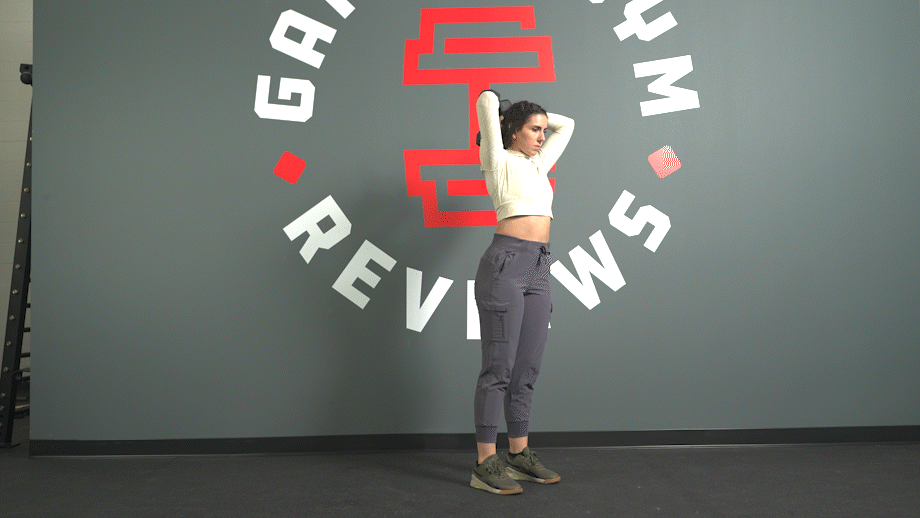
Modifications
- Dial it back: Perform the overhead triceps extension with a lighter weight or use a resistance band to reduce the load on your triceps.
- Make it harder: Perform a single-arm dumbbell triceps extension to further challenge your triceps strength and stability. This form of unilateral training can help correct any muscular imbalances or weaknesses.
RELATED: Unilateral Exercises
How To Do the Overhead Triceps Extension At Home
You can easily perform the overhead triceps extension in your home gym with a resistance band. Here’s how:
- Secure the band under your feet or a sturdy anchor point, and grasp the other end with both hands.
- Stand with your feet shoulder-width apart and extend your arms overhead, keeping your elbows close to your ears.
- Slowly lower your hands behind your head by bending your elbows
- Extend your arms back to the starting position, engaging your triceps throughout the movement.
- Repeat for the desired number of reps.
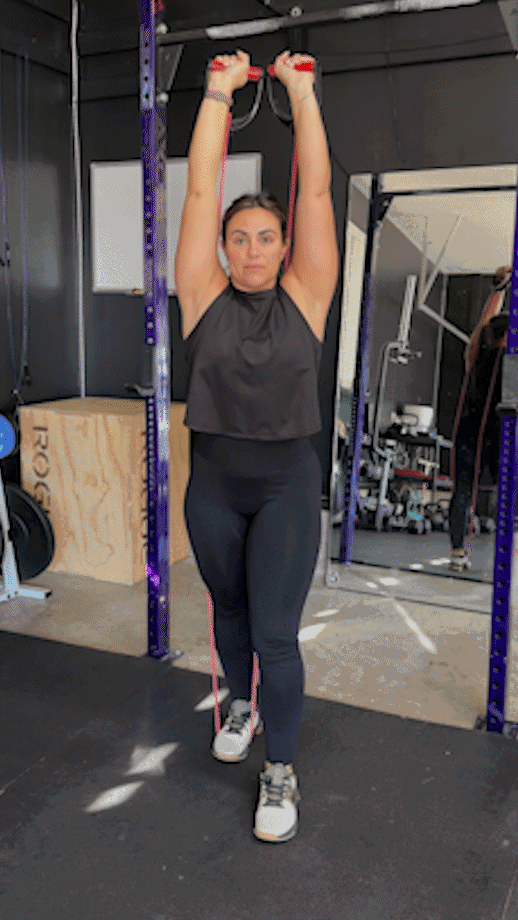
Overhead Triceps Extension Variations
- Single-arm overhead triceps extension: Perform the exercise with one arm at a time, focusing on isolating each triceps muscle for better symmetry and strength.
- Cable overhead triceps extension: Perform the exercise using a cable machine with a rope attachment, allowing for constant tension on the triceps throughout the movement.
- Kettlebell overhead triceps extension: Use a kettlebell instead of a dumbbell or barbell, providing a different grip and challenge for your triceps.
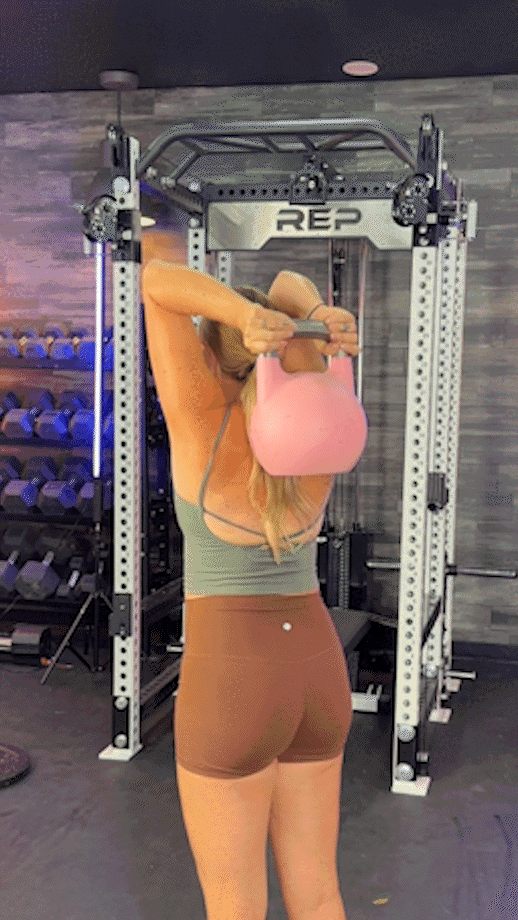
RELATED: 11 Triceps Extension Variations
Overhead Triceps Extension Alternatives
If you’re looking for other effective ways to work your triceps, there are several great alternatives to the overhead triceps extension. These exercises offer variety and can be tailored to different fitness levels, ensuring you can continue challenging your triceps and achieve balanced muscle development.
Skull Crusher
Why do it: Skull crushers, also known as lying triceps extensions, effectively isolate the triceps and allow for a significant range of motion, making them an excellent alternative to the overhead triceps extension.
How to do it:
- Lie on a bench with a barbell or pair of the best dumbbells extended straight above your chest.
- Bend your elbows to lower the weight toward your forehead, keeping your upper arms stationary.
- Extend your arms to return to the starting position, engaging your triceps throughout the movement.
- Repeat for the desired number of reps.
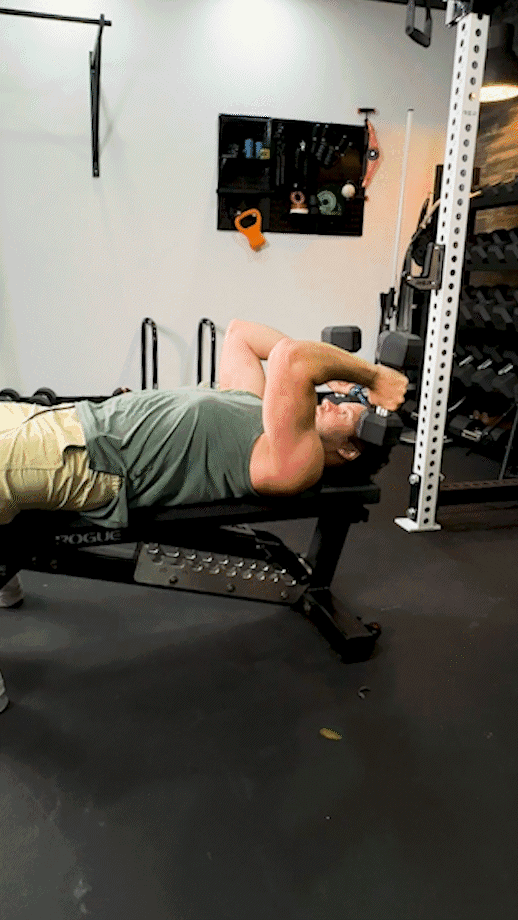
Triceps Rope Pushdown
Why do it: The triceps pushdown, performed on a cable machine, provides constant tension on the triceps and allows for precise control of the movement, making it a great alternative to the overhead triceps extension.
How to do it:
- Stand facing a cable machine with a straight bar or rope attachment set at the highest position.
- Grip the attachment with both hands and position your elbows close to your body.
- Push the attachment down until your arms are fully extended, then slowly return the cable to the starting position.
- Repeat for the desired number of reps.
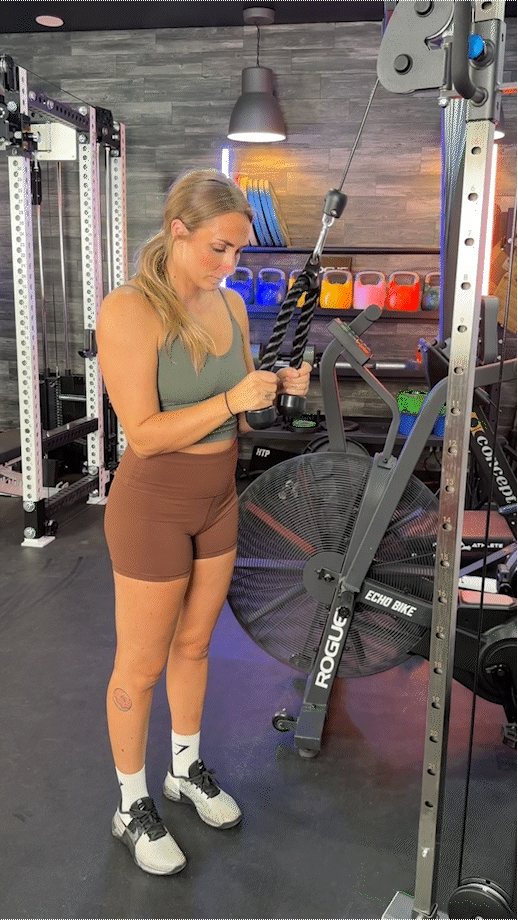
Triceps Kickback
Why do it: Triceps kickbacks target the lateral head of the triceps and you can perform it with dumbbells or resistance bands. This isolation exercise offers a highly focused and effective triceps workout.
How to do it:
- Hold a dumbbell in each hand and bend forward at the waist, keeping your back flat.
- Bend your elbows to bring the dumbbells to your sides, then extend your arms straight back.
- Return to the starting position and repeat for the desired number of reps.
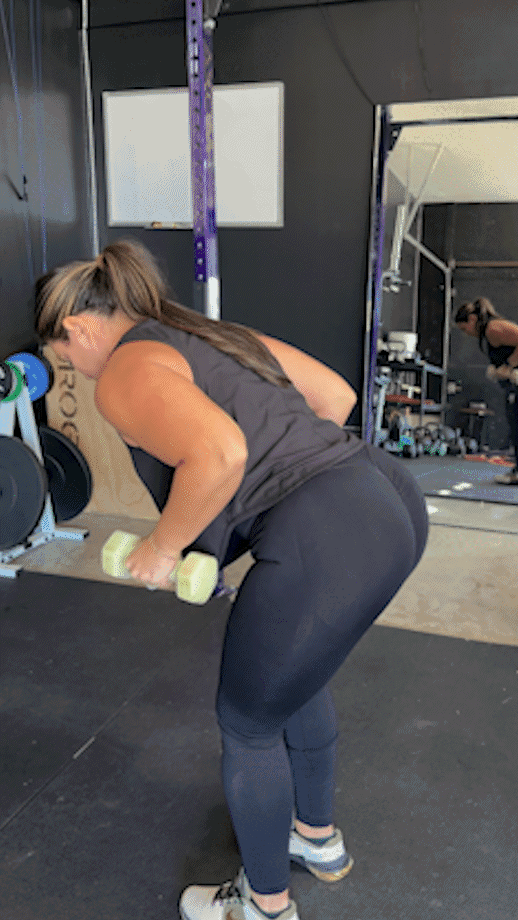
Close-Grip Bench Press
Why do it: The close-grip bench press engages your triceps, chest, and shoulders, making it a compound movement that effectively targets the triceps and improves upper-body strength.
How to do it:
- Lie on a bench with a barbell held above your chest, hands placed closer than shoulder-width apart.
- Lower the barbell toward your chest, keeping your elbows close to your body.
- Press the barbell back to the starting position, engaging your triceps and chest.
- Repeat for the desired number of reps.
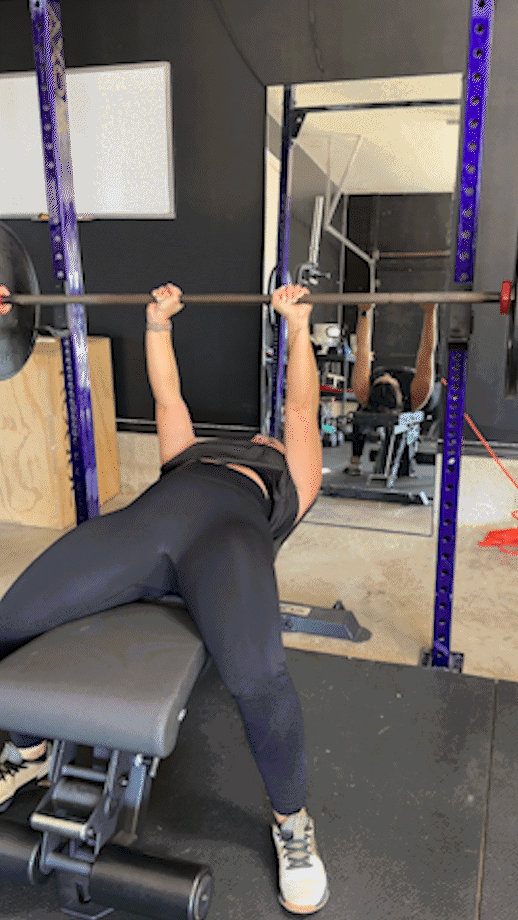
Benefits of the Overhead Triceps Extension
Incorporating this simple yet effective move into your weightlifting routine can strengthen your triceps, improve your upper-body strength, help you build muscle, and enhance your performance in other lifts.
Increases Your Triceps Strength
The overhead triceps extension primarily targets the triceps brachii, including the long, medial, and lateral heads. This comprehensive engagement strengthens your triceps muscles, which are crucial for extending the elbow joint and supporting various upper-body movements.
Strong triceps enhance your performance in exercises like bench presses, shoulder presses, and push-ups, making you more efficient and less prone to injuries.
RELATED: 3 Dumbbell Triceps Workouts
Helps Improve Upper-Body Stability
The overhead triceps extension challenges your stability by requiring you to control the weight overhead, engaging not only your triceps but also your shoulders, glutes, and core muscles.
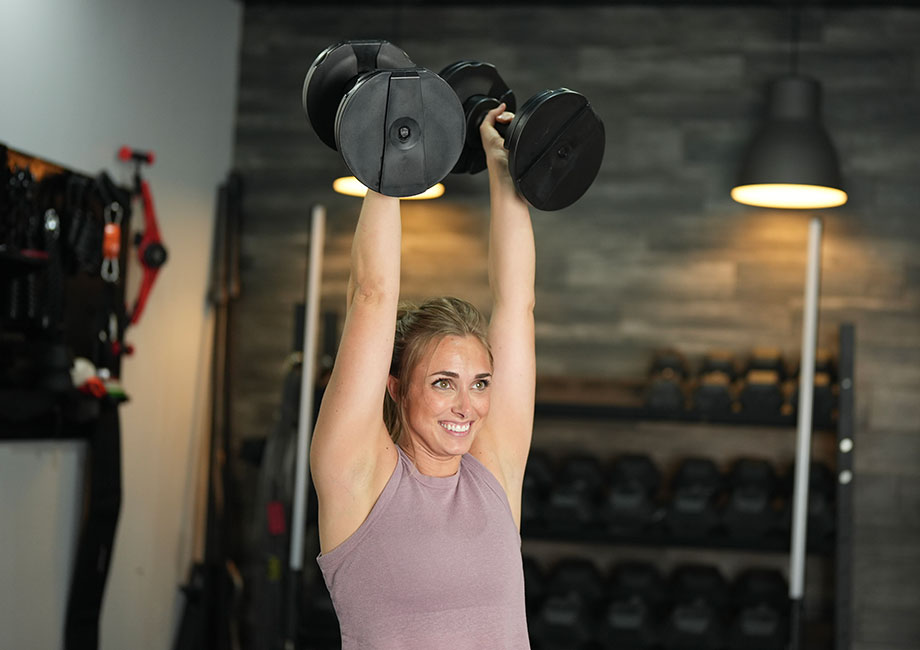
Improved stability from the overhead triceps extension can enhance your performance in other exercises and sports, making you more balanced and coordinated.
Helps Enhance Your Arm Definition
The overhead triceps extension can help improve the definition of your upper arms by directly targeting the three-headed muscle that comprises a significant portion of your arm’s muscle mass. A well-trained triceps immediately stands out due to its curves and contour.
You can achieve well-defined arms that boast balance and symmetry if you consistently perform upper-body exercises like the overhead triceps extension, lateral raise, biceps curl, and pull-up.
Common Overhead Triceps Extension Mistakes
Even though the overhead triceps extension is a simple and effective exercise, it’s easy to make mistakes that can diminish its benefits and potentially lead to injury. From the positioning of your elbows to the range of motion, being aware of these common errors can ensure you perform the overhead triceps extension correctly.
Not Keeping Your Elbows In
One of the most common mistakes in overhead triceps extension is allowing your elbows to flare out, which can reduce the exercise’s effectiveness and place unnecessary strain on your shoulders. Keep your elbows close to your head and aligned with your ears to maximize triceps engagement and prevent shoulder discomfort.
Using Too Much Weight
Too much weight can compromise your form and increase the risk of injury. You should always choose a weight that allows you to perform any exercise with proper technique and control. Focus on using a manageable weight and gradually increase the load as your strength improves to ensure safe and effective triceps development.
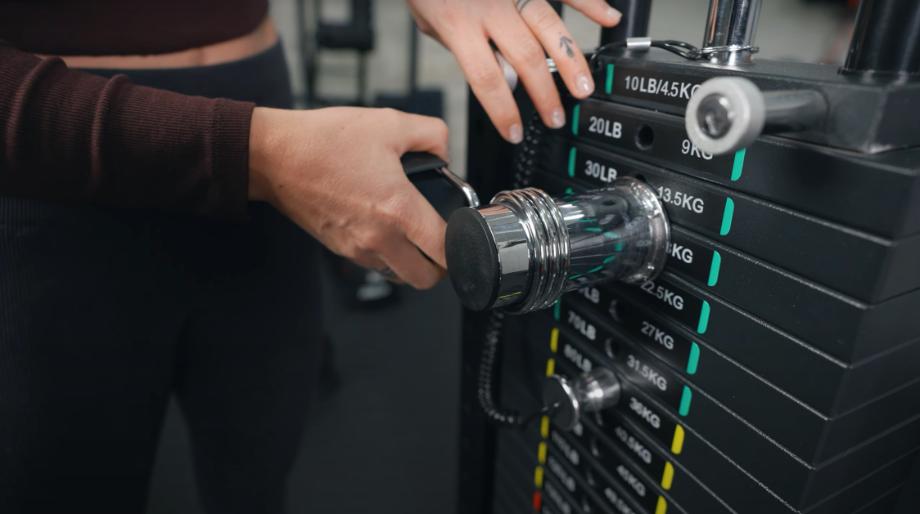
RELATED: What Is Progressive Overload?
Arching Your Lower Back
Arching your lower back during the overhead triceps extension can cause discomfort and reduce overall stability. Engage your core and glutes to maintain a neutral spine, avoid excessive arching, and reduce the risk of injury.
Inadequate Range of Motion
Failing to use a full range of motion can limit the effectiveness of the overhead triceps extension and prevent optimal triceps engagement. Lower the weight until your forearms are parallel to the ground, or you feel a comfortable stretch, then fully extend your arms to complete the movement.
Rushing the Reps
Performing the overhead triceps extension too quickly can compromise your form and reduce the time under tension, which is crucial for muscle growth. Focus on slow, controlled movements to maximize the exercise’s benefits and ensure proper triceps activation.
RELATED: Tempo Training
Muscles Worked by the Overhead Triceps Extension
Understanding which muscle groups are involved in the overhead triceps extension can help you engage them effectively and perform the exercise with proper form, ensuring you reap the maximum benefits for upper arm strength and stability.
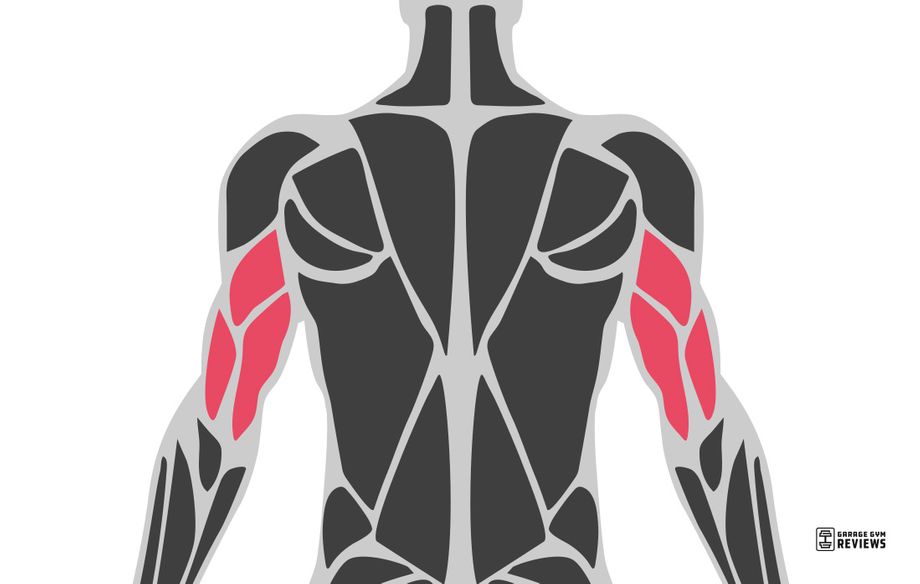
- Triceps brachii: The primary muscle targeted by the overhead triceps extension, responsible for extending the elbow joint. The long head, medial head, and lateral head of the triceps are all engaged during this exercise, with a particular focus on the long head due to the overhead position.
- Deltoids (anterior and medial): The shoulder muscles help stabilize the arm as it moves through the range of motion, particularly the anterior (front) and medial (middle) delts.
- Transverse abdominis and obliques: These core muscles engage to maintain stability and prevent excessive arching of the lower back. The transverse abdominis helps with core stability, while the obliques assist in maintaining balance.
- Gluteus maximus: The glutes engage to help stabilize the lower body and maintain a neutral spine during the exercise, preventing the lower back from arching excessively.
- Forearms (brachioradialis and flexors): The muscles in the forearms assist in gripping the weight and maintaining control throughout the movement, ensuring a stable and effective lift.
- Latissimus dorsi: The large back muscles help support the shoulders and upper arms, contributing to overall stability and control.
Overhead Triceps Extension: Final Thoughts
The overhead triceps extension can be one of your go-to exercises for sculpting strong, defined arms that steal the spotlight. Integrating this classic movement into your strength training routine will boost your upper-body strength and enhance your aesthetic for that #SunsOutGunsOut moment.
Say goodbye to untoned triceps and hello to a three-headed monster that’ll capture attention in and out of the gym.
Overhead Triceps Extension: FAQs
What are the benefits of overhead cable triceps extensions?
Overhead cable triceps extensions provide constant tension throughout the entire range of motion, effectively isolating and strengthening the triceps while improving upper-arm stability and muscle definition.
What muscles do overhead triceps extensions work?
Overhead triceps extensions primarily work the triceps brachii, specifically the long head. They also engage the deltoids, glutes, core muscles, and forearms for stability.
RELATED: What Muscles Do Push-Ups Work?
What is the difference between a triceps pushdown and an overhead triceps extension?
A triceps pushdown primarily targets the lateral head of the triceps with a downward motion using a cable machine, whereas an overhead extension focuses on the long head of the triceps with an upward and behind-the-head movement.
What is the difference between skull crushers and overhead triceps extensions?
While skull crushers are performed lying down and involve lowering a weight toward your forehead to target the triceps, overhead triceps extensions are performed standing or sitting with the weight extended overhead, focusing more on the long head of the triceps.
Further reading

See our top picks for the best lactose-free protein powder for muscle gains without GI distress. Read more

Looking to build triceps that turn heads and boost your performance in push day exercises like the bench press and Tate press? The overhead triceps extension is a classic bodybuilding movement that effectively targets those horseshoe-shaped muscles synonymous with #ArmDay. As a certified personal trainer (CPT), I’ve helped many clients achieve stronger, more defined triceps through this versatile exercise. In this guide, I’ll teach you how to perform the overhead triceps extension safely and effectively so you can build muscle and strength and set yourself up for success in other lifts. » Read more about: Transform Your Triceps: How To Perfect the Overhead Triceps Extension » Read more

Looking to build triceps that turn heads and boost your performance in push day exercises like the bench press and Tate press? The overhead triceps extension is a classic bodybuilding movement that effectively targets those horseshoe-shaped muscles synonymous with #ArmDay. As a certified personal trainer (CPT), I’ve helped many clients achieve stronger, more defined triceps through this versatile exercise. In this guide, I’ll teach you how to perform the overhead triceps extension safely and effectively so you can build muscle and strength and set yourself up for success in other lifts. » Read more about: Transform Your Triceps: How To Perfect the Overhead Triceps Extension » Read more

Our ProForm Performance 400 Treadmill review takes a look at this now-discontinued machine and offers alternatives. Read more

